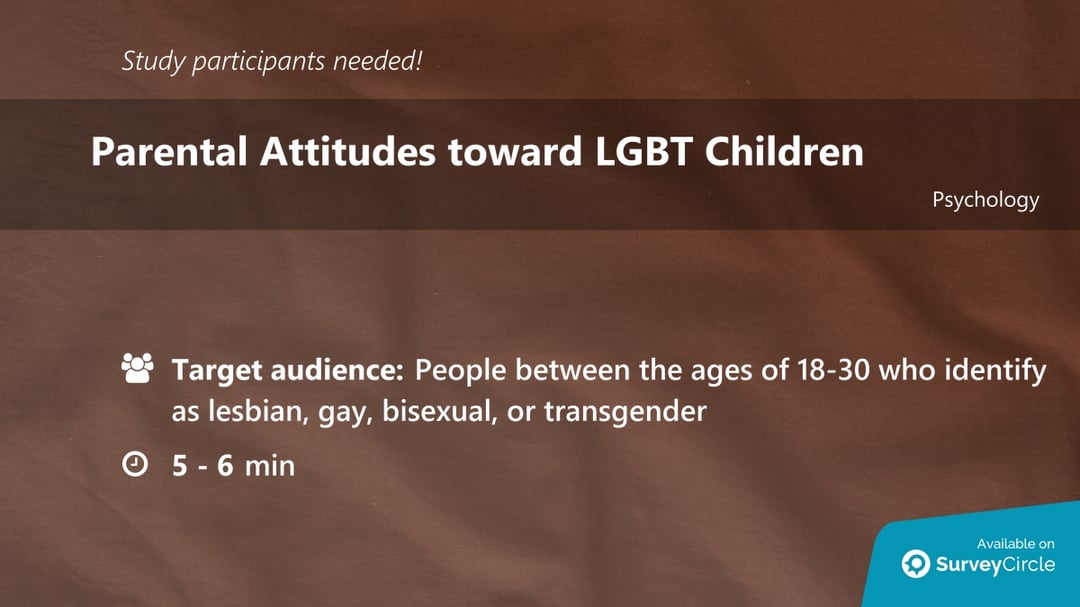The Changing Landscape Of College Funding: A Survey Of Parental Attitudes And Loan Usage

Table of Contents
Shifting Parental Attitudes Towards College Savings
The traditional approach to college funding, relying heavily on dedicated savings plans, is undergoing a significant shift. Parents are increasingly grappling with economic uncertainty and competing financial priorities, leading to a reevaluation of their college savings strategies.
The Decline of Traditional Savings Methods
The once-popular 529 college savings plan, while still a viable option, is seeing a decline in participation rates. This can be attributed to several factors:
- Increased awareness of other investment options: Parents are exploring diverse investment strategies, some potentially offering higher returns but also increased risk.
- Difficulty keeping up with rising tuition costs: The escalating cost of higher education makes it challenging for many families to maintain consistent contributions to 529 plans or other dedicated savings accounts.
- Shifting priorities towards immediate family needs: Unexpected expenses, housing costs, and healthcare needs often compete with long-term college savings goals.
Statistics show a concerning trend: participation in 529 plans, while still substantial, has plateaued in recent years, and the average contribution per family has remained relatively stagnant despite inflation. This highlights a growing need for alternative college funding strategies.
The Rise of Alternative Funding Strategies
Faced with the challenges of traditional savings, parents are exploring alternative approaches to finance their children's college education. These include:
- Crowdfunding: Platforms like GoFundMe and Kickstarter allow families to solicit donations from a wider network, leveraging the power of social media and online communities. While effective for some, success depends heavily on social connections and the compelling nature of the fundraising campaign.
- Family loans: Loans from grandparents or other family members can bridge the funding gap, often with more flexible repayment terms than traditional student loans. However, it's crucial to formalize these loans with clear agreements to avoid future family conflicts.
- Part-time jobs during college: Students increasingly take on part-time employment to cover educational expenses, reducing the reliance on loans and family contributions. This fosters financial responsibility and work experience but may limit academic pursuits or extracurricular activities.
Teaching children and teenagers about financial literacy is becoming increasingly important, enabling them to contribute actively to their college funding and make informed decisions about their financial future.
The Increasing Reliance on Student Loans
The rising cost of tuition has led to a significant increase in reliance on student loans, resulting in a substantial burden of student loan debt for many graduates.
The Growing Burden of Student Loan Debt
The average student loan debt is steadily climbing, leaving graduates struggling to manage repayments alongside other significant life expenses.
- Impact on post-graduation financial planning: High student loan debt can significantly delay major life milestones like purchasing a home, getting married, or starting a family.
- Challenges in homeownership and starting a family: The weight of student loan repayments often restricts financial flexibility, making it difficult to save for a down payment or manage household expenses.
- Mental health effects of significant debt: The stress and anxiety associated with substantial student loan debt can negatively impact mental well-being.
The default rate on student loans remains a serious concern, highlighting the need for responsible borrowing and comprehensive financial planning.
Parental Co-signing and its Implications
Many parents co-sign student loans, assuming significant financial responsibility.
- Financial risk to parents if the student defaults: If the student fails to repay the loan, the responsibility falls on the co-signer, impacting their credit score and financial stability.
- Impact on parents' credit scores: A student loan default can severely damage the co-signer's creditworthiness, impacting their ability to secure loans or credit in the future.
- Importance of understanding loan terms and conditions: Parents need to carefully review loan agreements, understanding interest rates, repayment schedules, and potential consequences of default.
Exploring alternative loan options that don't require parental co-signing, such as federal student loans based solely on the student's creditworthiness, can mitigate this risk.
Strategies for Effective College Funding Planning
Proactive planning is essential to navigate the complexities of college funding.
Budgeting and Financial Planning for Higher Education
Early planning and financial literacy are critical for effective college funding.
- Creating a realistic college savings plan: Develop a budget that incorporates regular contributions to savings accounts, considering potential income and expenses.
- Exploring scholarships and grants: Research and apply for scholarships and grants that can significantly reduce the need for loans.
- Considering community college options: Community colleges offer a more affordable pathway to higher education, allowing students to transfer credits to four-year institutions.
Utilizing online resources and financial advisors specializing in college planning can provide invaluable guidance.
Understanding Financial Aid Options
Understanding the different types of financial aid available is crucial.
- Merit-based vs. need-based financial aid: Distinguish between merit-based awards, based on academic achievement, and need-based aid, determined by financial circumstances.
- Importance of researching scholarships: Explore various scholarship opportunities, including those offered by colleges, organizations, and private foundations.
- Understanding loan repayment options: Compare different loan options and understand the repayment terms and conditions to choose the most suitable plan.
Completing the FAFSA (Free Application for Federal Student Aid) form is a vital step in accessing federal financial aid.
Conclusion
The changing landscape of college funding presents significant challenges and opportunities for families. Understanding parental attitudes towards college savings, the increasing reliance on student loans, and the availability of alternative funding strategies are crucial for effective financial planning. By implementing proactive strategies and seeking expert advice, families can navigate this complex financial landscape and ensure a brighter future for their children. Start planning your family's approach to college funding today by exploring the resources mentioned above and seeking professional financial guidance. Remember, proactive college funding strategies can alleviate significant stress and ensure a smoother path to higher education.

Featured Posts
-
 Last Chance For Cheap Boston Celtics Championship Gear
May 17, 2025
Last Chance For Cheap Boston Celtics Championship Gear
May 17, 2025 -
 Diddy Trial Cassie Venturas Testimony On Sean Combs Freak Offs
May 17, 2025
Diddy Trial Cassie Venturas Testimony On Sean Combs Freak Offs
May 17, 2025 -
 Ultraviolette Tesseract Electric Scooter Price Range And Performance Details
May 17, 2025
Ultraviolette Tesseract Electric Scooter Price Range And Performance Details
May 17, 2025 -
 Former Lynx Player Signs With Golden State Valkyries
May 17, 2025
Former Lynx Player Signs With Golden State Valkyries
May 17, 2025 -
 27 Puntos De Anunoby Impulsan Victoria De Knicks Sobre 76ers
May 17, 2025
27 Puntos De Anunoby Impulsan Victoria De Knicks Sobre 76ers
May 17, 2025
